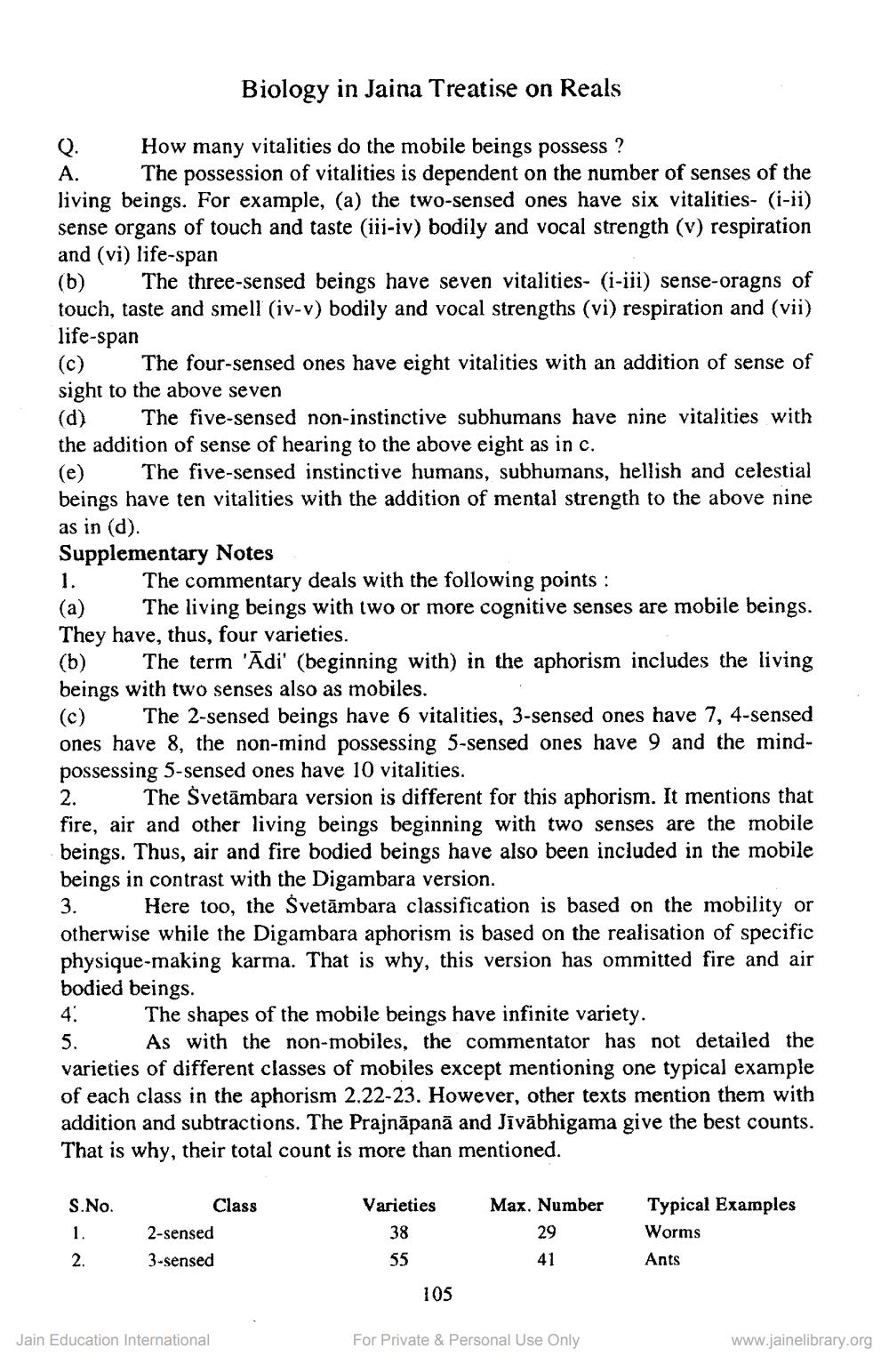________________
Biology in Jaina Treatise on Reals
How many vitalities do the mobile beings possess ? A. The possession of vitalities is dependent on the number of senses of the living beings. For example, (a) the two-sensed ones have six vitalities- (i-ii) sense organs of touch and taste (iii-iv) bodily and vocal strength (v) respiration and (vi) life-span (b) The three-sensed beings have seven vitalities- (i-iii) sense-oragns of touch, taste and smell (iv-v) bodily and vocal strengths (vi) respiration and (vii) life-span (c) The four-sensed ones have eight vitalities with an addition of sense of sight to the above seven (d) The five-sensed non-instinctive subhumans have nine vitalities with the addition of sense of hearing to the above eight as in c. (e) The five-sensed instinctive humans, subhumans, hellish and celestial beings have ten vitalities with the addition of mental strength to the above nine as in (d). Supplementary Notes
The commentary deals with the following points : (a) The living beings with two or more cognitive senses are mobile beings. They have, thus, four varieties. (b) The term 'Ādi' (beginning with) in the aphorism includes the living beings with two senses also as mobiles. (c) The 2-sensed beings have 6 vitalities, 3-sensed ones have 7, 4-sensed ones have 8, the non-mind possessing 5-sensed ones have 9 and the mindpossessing 5-sensed ones have 10 vitalities. 2. The Svetāmbara version is different for this aphorism. It mentions that fire, air and other living beings beginning with two senses are the mobile beings. Thus, air and fire bodied beings have also been included in the mobile beings in contrast with the Digambara version. 3. Here too, the Svetāmbara classification is based on the mobility or otherwise while the Digambara aphorism is based on the realisation of specific physique-making karma. That is why, this version has ommitted fire and air bodied beings. 4. The shapes of the mobile beings have infinite variety. 5. As with the non-mobiles, the commentator has not detailed the varieties of different classes of mobiles except mentioning one typical example of each class in the aphorism 2.22-23. However, other texts mention them with addition and subtractions. The Prajnāpanā and Jivābhigama give the best counts. That is why, their total count is more than mentioned.
S.No.
Varieties
Max. Number
Class 2-sensed 3-sensed
38
29
Typical Examples Worms Ants
2.
55
41
105
Jain Education International
For Private & Personal Use Only
www.jainelibrary.org




